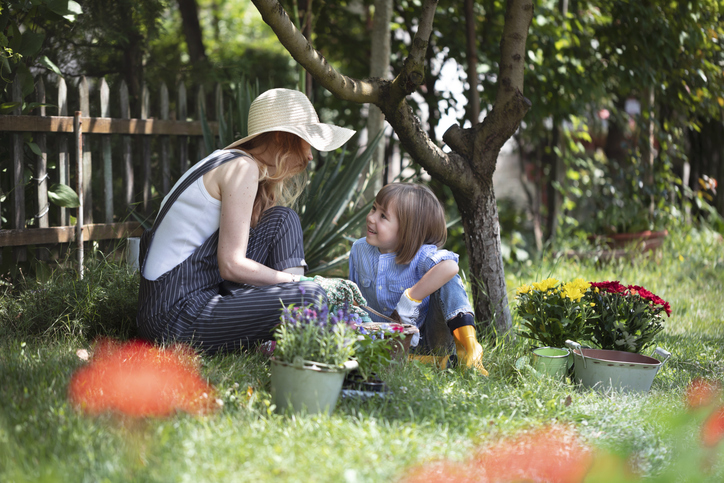Helping Kids Transition from School to Summer: Strategies for Parents and Caregivers
May 22, 2025
As the final school bell rings and backpacks are tucked away, many kids eagerly anticipate the freedom of summer break. But, for parents and caregivers, the shift from structured school days to the looser rhythm of summer can bring its own set of challenges. Without the familiar routine of classes, assignments, and extracurriculars, some children may feel unmoored or overwhelmed by the sudden change.
Helping kids transition from school to summer smoothly involves more than just planning activities. It’s about creating a sense of balance, continuity, and support that allows them to thrive during the months ahead. Here, Marla Barnard, school liaison at Riverside Behavioral Health, offers helpful advice to ensure this transition is successful.
Structure and Activities Are the Way to Go
Kids often thrive on routine, so the sudden freedom of summer can feel overwhelming and disorienting, making the transition from school a real challenge. Structure offers kids a sense of safety and predictability, which is especially important during transitions. Parents can ease the shift to summer by establishing a new routine—getting kids involved in planning daily tasks, assigning household responsibilities, and reinforcing simple habits like making beds and brushing teeth.
“Get the kids involved, help them create the list. It also helps teach responsibility. If kids are left to their own devices, they might flounder a little. With direction, structure, that gives them guidance too,” states Barnard.
Parents can make daily tasks feel less like chores by modeling a positive attitude and presenting them as a natural, lighthearted part of the day. When routines are framed with consistency and ease (“First we do this, then we do that.”), kids are more likely to respond well. Just like in school, predictable structure followed by fun activities helps maintain engagement without pressure.
“Go outside, go walk around the block. Maybe that's part of the routine,” suggests Barnard. “Just get outside for ten minutes, go get the mail, or do anything that can be perceived as an activity, because we don't have to do math and spelling and all that. It's helpful to do this and kids respond well with positive direction and guidance. They want to be helpful.”
Screen Time: Putting Limits on Isolation
Summer can be socially isolating for some kids, so it's important for families to encourage connection. Parents can model healthy habits by limiting screen time, sharing meals, and involving kids in daily activities like cooking. Free or low-cost community events—like library programs, local festivals, and park district activities—offer great opportunities for social engagement. Structuring the day to include outings and inviting friends along can help kids stay connected and avoid isolation.
“I would put a moratorium on bedroom time. You need to be out and socializing and be with the family. Summer can be the best time ever. But, that comes with some effort,” notes Barnard.
Mitigating Summer-Related Anxiety: Why Perspective Is Key
Anxiety is a common occurrence among adolescents. Caregivers should watch for signs of summer-related anxiety such as withdrawal, avoidance, increased arguing or frustration, and physical complaints like headaches or stomachaches. These symptoms are often real to the child, even if not medically urgent. Subtle behavioral changes—like crying more easily or becoming unusually agitated—can also be red flags. The key is to compare the child’s current behavior to their usual patterns, not to other kids, and gently offer guidance and support when something seems off.
When kids are upset, caregivers can start by gently asking, “What do you need?”—and help translate those feelings when words are hard to find. Simple tools like deep breathing, engaging the five senses, and changing the environment (like stepping outside) can help kids regulate their emotions. It’s important to intervene early—before emotions escalate—by recognizing subtle cues and offering calming strategies such as sensory grounding exercises and quiet, supportive presence.
“Those are some simple, doable tactics within the moment to help reground them and get them reconnected,” notes Barnard. “Oftentimes, kids need help seeing a situation differently, and that's where the caregiver comes in to ask questions and provide guidance. ‘Do I have to be mad at my brother who ruined my Lego set? Do I have to hit him?’ Well, they might think they do, but they don't. The caregiver can just offer a different perspective.”
And, perspective is everything. Success depends on how parents and other caregivers can frame each and every day, every scenario. “You might say, ‘Oh my gosh, there is only twelve days left of school, and I can't wait until we're all together and we're doing our new routine. It's going to be an amazing summer.’ Perspective has to do with everything,” she adds. “No matter what time of year it is or what's going on, we still have to get up, we still have to make the beds. We still have to live in harmony. That won't change, but the one thing that changes is how we see it.”
For more information about Riverside's Pathways programs click here.